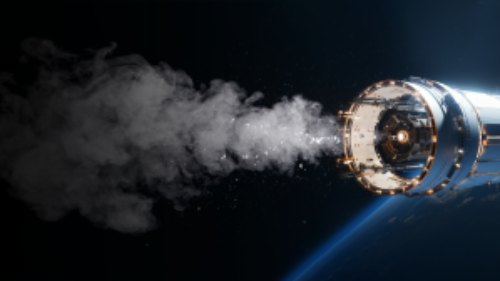A SpaceX launch from Cape Canaveral Space Force Station on Tuesday night marked the 57th launch of the year for the Space Coast, matching the record total achieved in 2022.
The launch involved a Falcon 9 carrying 22 of SpaceX’s Starlink internet satellites, taking off from Canaveral’s Space Launch Complex 40 at 8:36 p.m. Notably, it was the 16th flight for the first-stage booster, which successfully landed on the droneship “Just Read the Instructions” in the Atlantic.
SpaceX has been a major player on the Space Coast, with this mission marking its 53rd launch from either Canaveral or Kennedy Space Center in the current year. In comparison, United Launch Alliance (ULA) has conducted three launches, and Relativity Space has had one launch. SpaceX stands alone as the launch provider at Kennedy Space Center, with a total of 11 launches, while ULA, SpaceX, and Relativity have combined for 46 launches from Canaveral.
The bulk of SpaceX’s launches have been related to its rapidly expanding Starlink constellation, with this being the 31st Starlink launch from the Space Coast. Additionally, SpaceX has been responsible for all three U.S.-based crewed missions this year, including Crew-6, Axiom 2, and Crew-7, all launched from Kennedy Space Center.
Kennedy Space Center has also hosted four Falcon Heavy launches, including the recent Psyche launch, which marked NASA’s first use of this powerful rocket.
The pace between launches has accelerated, with only an eight-hour and 42-minute gap between the Psyche launch on Friday morning and a Starlink launch on Friday evening. This is the shortest time between launches since the Gemini program in 1966, when four missions were launched within a similar timeframe.
SpaceX has consistently set turnaround records for launches from SLC 40, at one point managing to conduct two launches from the same pad in under four days.
With around 11 weeks remaining in the year, the Eastern Range could potentially exceed 70 launches if the current pace is maintained. SpaceX has several more Starlink flights in the pipeline, along with the CRS-29 resupply mission scheduled for as early as November 1. Furthermore, there’s the possibility of the first successful launch of NASA’s Commercial Lunar Payload Services (CLPS) missions on November 14, aiming to send the Intuitive Machines IM-1 lunar lander to the moon.
There might also be one more Falcon Heavy launch before the year concludes, carrying out the USSF-52 mission for the Space Force.
While Relativity Space completed its solitary launch of the 3D-printed Terran 1 rocket in March, ULA may fit in one more flight before year-end with the debut launch of its new Vulcan Centaur rocket. This new rocket, intended to replace ULA’s Atlas and Delta family, has faced delays but is currently targeted for a December flight.
Leadership at Space Launch Delta 45 anticipated up to 92 launches for the Space Coast in 2023, with a pace of two launches per week expected in the coming years as more rocket companies bring their hardware to the launch pads.
SpaceX’s launch cadence is projected to remain rapid, while ULA is looking to increase its Vulcan Centaur flights to at least twice a month. Concurrently, Blue Origin, led by Jeff Bezos, aims to debut its New Glenn heavy lift rocket into space by the end of 2024, although this timeline could potentially shift to 2025.
The information contained in this post is for general information purposes only. The information is provided by SpaceX Launch Ties Space Coast's Annual Launch Record and while we endeavour to keep the information up to date and correct, we make no representations or warranties of any kind, express or implied, about the completeness, accuracy, reliability, suitability or availability with respect to the website or the information, products, services, or related graphics contained on the post for any purpose.


